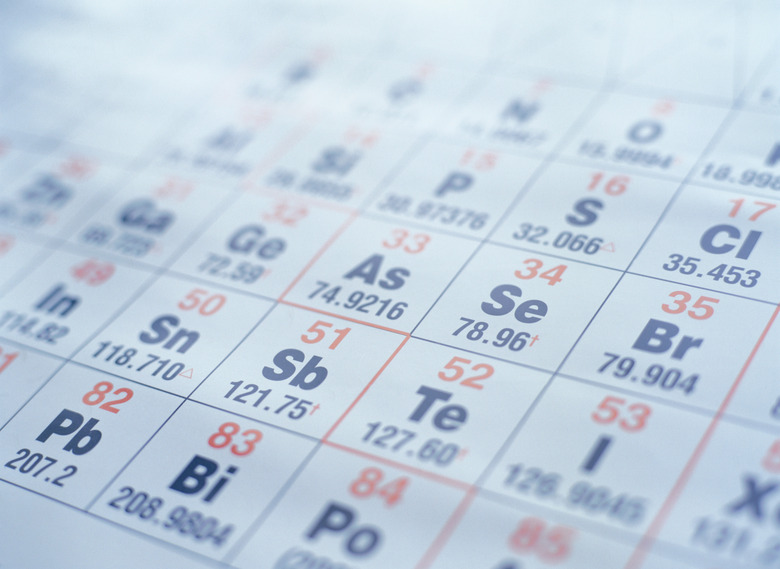How To Build A Mercury (Hg) Model Out Of Foam Balls
Mercury, a silvery liquid, is one of the most familiar of elements. As a metal that forms compounds easily when combined with other elements, mercury is used in scientific instruments like thermometers and barometers, in electrical switches and even in dental fillings. Despite its many uses, mercury is toxic to humans and can cause many health concerns following exposure. Mercury's properties and uses stem from its elemental structure. You can learn more about this structure by building a model of mercury using foam balls.
Steps To Build a Mercury Model with Foam Balls
Step 1
Cut all of the foam balls in half, so that you have two equal-sized hemispheres from each ball.
Step 2
Paint the half balls different colors to show the different parts of the mercury atom. You should have 80 halves painted to depict protons, 80 halves painted to show electrons and 121 halves painted as neutrons.
Step 3
Glue the protons and neutrons in a cluster at the center of your poster board. This is the nucleus of your mercury atom. Make sure the half balls are placed tightly together, with no spaces in between.
Step 4
Use the marker to draw six concentric circles around your nucleus. These are the mercury atom's six electron energy levels. Make the width of each section about half an inch wider than your foam balls.
Step 5
Glue the electron half balls in the energy level circles. Place two half balls in the first, innermost energy level circle. Put eight half balls in the second circle, 18 half balls in the third circle, 32 half balls in the fourth circle, 18 half balls in the fifth circle, and two half balls in the sixth, outermost circle.
Things Needed
- 150 small foam balls
- Craft knife
- 3 colors of paint
- Poster board
- Marker
- Glue
TL;DR (Too Long; Didn't Read)
Electrons in an atom tend to be located in pairs, so glue your electrons in groups of two for greater accuracy. If you need more space on your poster board to fit all the foam balls, consider gluing the protons and neutrons on top of each other.
Warning
Your mercury model will not be to scale. In a real mercury atom, the nucleus is extremely small and tightly compacted. The electron energy levels take up much more space, but the electrons themselves are tinier than the protons and neutrons and do not occupy much of the energy level volume.
References
Cite This Article
MLA
Brown, Laurel. "How To Build A Mercury (Hg) Model Out Of Foam Balls" sciencing.com, https://www.sciencing.com/build-model-out-foam-balls-5771504/. 24 April 2017.
APA
Brown, Laurel. (2017, April 24). How To Build A Mercury (Hg) Model Out Of Foam Balls. sciencing.com. Retrieved from https://www.sciencing.com/build-model-out-foam-balls-5771504/
Chicago
Brown, Laurel. How To Build A Mercury (Hg) Model Out Of Foam Balls last modified March 24, 2022. https://www.sciencing.com/build-model-out-foam-balls-5771504/
